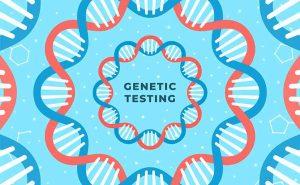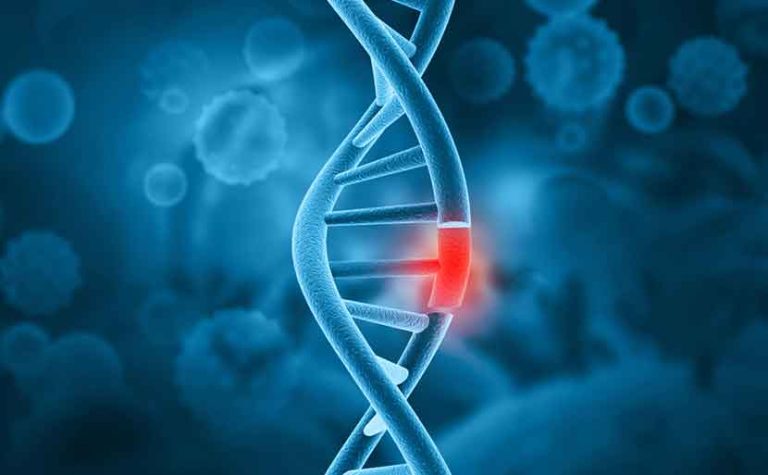SNP (snip) is a single nucleotide polymorphism. It means that only one base in the genome DNA sequence, which is also known as the blueprint of life, has been replaced by a different base. It is believed that this causes individual differences in the shape and constitution of humans.
- What is SNP (single nucleotide polymorphism)
- What are the differences between genes, DNA, genomes, and chromosomes
- What is caused by SNP (single nucleotide polymorphism)
- Remarkable progress in SNP (single nucleotide polymorphism) analysis methods
- “Tailor-made medicine” using SNP (single nucleotide polymorphism) that is attracting attention
- SNP (single nucleotide polymorphism) projects and personal information that are attracting attention from countries to companies
What is SNP (single nucleotide polymorphism)?
SNP is an abbreviation for Single nucleotide Polymorphism, which is a translation of single nucleotide polymorphism. SNP means that only one different base has been replaced in the base sequence of genomic DNA, which is said to be the blueprint of life. It has attracted attention that the substitution of just one base sequence in an SNP can affect a person’s constitution and susceptibility to disease, and research on tailored medical care based on genetic information based on SNPs is currently being actively conducted.
What are the differences between genes, DNA, genomes, and chromosomes?
Nowadays, anyone can easily undergo genetic testing, regardless of its credibility. Also, you may have heard a lot about genome-edited foods (or genetically modified foods) and DNA testing in the news. Regarding chromosomes NIPT (New Prenatal Diagnosis)It is known that the risk of chromosomal abnormalities in the fetus can be detected with high accuracy from maternal blood.
For these reasons, genes, DNA, genomes, and chromosomes have become familiar to us. However, in general, few people clearly understand the difference between genome, DNA, and genes, and there are many misconceptions that DNA = the cause of genetics. Before understanding SNPs (single nucleotide polymorphisms), it is important to understand the roles of genes, DNA, genomes, and chromosomes.
What is a gene?
Genes are the data that make up the bodies of living things. Our bodies are made of proteins, including collagen, which is the elastic substance of the skin, muscles that move the body, hemoglobin, which carries oxygen throughout the body, digestive enzymes, and the sense of smell.
Proteins are created based on genes, which are data, and are completed as living organisms’ bodies. It is said that there are approximately 20,000 types of human genes.
What is DNA?
DNA is an abbreviation for deoxyribonucleic acid. It is easy to understand if you think of the double helix shape that you see in videos explaining DNA. Inside the helix, there are “Adenine”, “Thymine”, “Guanine”, and “Cytosine”, and the initial letters A, T, G, and C are called bases. Masu. The arrangement of these four bases (base sequence) is genetic information.
If genes are data, then DNA can be said to be the blueprint for creating living things. Humans have approximately 3 billion base sequences, which contain the genetic information that makes them identical to their parents. All genetic information that makes a child identical to its parents is called “genome DNA.” The similarity in appearance between parent and child is due to this genomic DNA.
Based on these blueprints recorded in DNA, we decide where and how much of the protein structures that make up the human body are created. Furthermore, a person’s facial features, body shape, and constitution change due to differences in the base sequence of DNA.
What is a genome?
Genome is a German word that combines gene and ome, and means “all necessary genes.” It was a word coined by German botanist Hans Winkler in 1920, and when translated, it is expressed as “the entire genetic information.”
The genome, which is referred to as the entire genetic information, refers to “all of the genes necessary to create an organism.” Children of mice become mice, and children of humans become humans, so it can be said that it is the set of DNA necessary to become each living thing.
What is a chromosome?
Chromosomes are structures made of thread-like DNA wrapped around proteins called histones. A single chromosome contains hundreds to thousands of genes, and each chromosome is inherited from the father and mother, making them a pair, and humans have 46 chromosomes (23 pairs). 44 of these are called autosomes and are numbered in order from the largest to 1, 2, 3, and so on.
The remaining two chromosomes are called sex chromosomes and determine gender. Sex chromosomes are divided into two types: X chromosomes and Y chromosomes, and if the combination is XY, the person is male, and if the combination is XX, the person is female.
~What is the Human Genome Project~
The Human Genome Project is an international project launched to decipher the entire DNA base sequence in the nucleus of human cells. It was launched with the purpose of elucidating the order in which the 3 billion pieces of DNA are arranged, where they are located, and what information is incorporated into them.
In 2003, the complete deciphering of the human genome was completed, and the results of this deciphering are expected to lead to advances in genetic medicine, such as advancing genetic research into the causes of diseases and materials for pharmaceutical preparations.
What SNP (single nucleotide polymorphism) causes
The 3 billion base sequences (order of bases) in human genome DNA are not the same for all humans. A polymorphism (diversity) may occur when a standard base sequence and a single base are replaced with a different base, and this is called a SNP (single nucleotide polymorphism).
It is said that there is approximately one SNP (single nucleotide polymorphism) in every 300 to 1,500 bases in human DNA. It can be said that the substitution of different bases, or in other words, differences in genetic information, creates differences in individuality and constitution, such as appearance, personality, and tolerance to hay fever and alcohol.
Furthermore, SNPs (single nucleotide polymorphisms) are defined as those that occur in 1% or more of the population, and those with a base sequence change frequency of less than 1% are classified as mutations.
Remarkable progress in SNP (single nucleotide polymorphism) analysis methods
Conventionally, the mainstream method of SNP analysis has been to target a single SNP (or several SNPs) and conduct analysis individually. Specifically, the RFLP method (the gene region containing the SNP is amplified by the PCR method and then treated with restriction enzymes) and the SSCP method (the gene region containing the SNP is amplified by the PCR method and then the three-dimensional structure This includes things like performing electrophoresis while retaining the However, these methods were cumbersome and lacked accuracy.
In the 2000s, there was a demand for higher-throughput analysis methods. Instead of individual analysis, comprehensive SNP analysis, which is still important today, was proposed one after another. Among them, the most notable technological breakthrough was the analysis method called DNA microarray. This is a method that analyzes the sequence of DNA contained in a sample by hybridizing DNA to a chip that has many DNA fragments (probes) arranged in a grid on a substrate, and detecting it using fluorescence. During SNP analysis, comprehensive analysis is now possible by using nucleotides near the SNP as probes.
Nowadays, DNA microarray technology has further developed and its cost has decreased, making it easier to use as an analysis tool. Furthermore, as an advanced technology, whole-genome sequencing using next-generation sequencers (NGS) has even been used to search for low-frequency SNPs, and the scope of analysis is expected to further expand in the future. SNP databases actually created using these technologies are also substantial, and the foundation for utilizing SNPs in the fields of research and medicine is being laid.
“Tailor-made medicine” using SNP (single nucleotide polymorphism), which is attracting attention
Genome research has continued to accelerate since the human genome was decoded in 2003. We have shifted from elucidating the causes of single-gene diseases to comprehensive (genome-wide) elucidation and analysis of various diseases and drug responsiveness (differences in effectiveness and side effects obtained when using drugs). , further research will be conducted.
Diseases are caused by a complex interplay of not only genetic factors but also environmental factors, so analysis of SNPs (single nucleotide polymorphisms) alone cannot elucidate everything. However, it can be said that there are great expectations for the mechanisms of many diseases and its use in disease prevention.
By analyzing and accumulating information on SNPs (single nucleotide polymorphisms), it is also possible to learn about drug efficacy and side effects before taking medication. This opens the door to “tailor-made medicine,” in which drugs are used in the optimal amount and timing based on the individual’s genetic background, and will continue to develop in the future. In addition, analysis of SNPs (single nucleotide polymorphisms) is not only used for tailor-made medicine, but also enables the development of drugs that are not affected by genetic background or have little difference in drug efficacy.
SNP (single nucleotide polymorphism) projects and personal information that are attracting attention from countries to companies
Currently, genome analysis of cancer, intractable diseases, etc. is being promoted as part of a national project. A move has been announced not only by the nation but also by major companies to engage in healthcare business by requesting information on their employees’ genome data and health checkup results, targeting only those who wish to do so. One of the reasons behind these developments is the reduction in the cost of genome analysis.
On the other hand, information based on individual genome data can be said to be the “ultimate personal information.” According to the Personal Information Protection Act revised in 2015, the base sequence that makes up DNA is defined as a personal identification code.
In general, it is not easy to connect and identify subjects and individuals from genomic data without knowledge of genetics. However, leakage of personal information through genome data has made it possible to infer diseases caused by genetic characteristics. There is no guarantee that this will lead to discrimination against subjects in employment, marriage, financial services, etc.
Of course, SNP (single nucleotide polymorphism),NIPT (New Prenatal Diagnosis)Genetic analysis and research are making remarkable progress. Clearing these logical problems may redefine conventional medical care.
 中文
中文



















